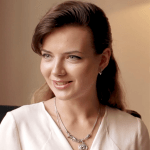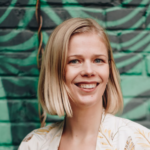Media and Information Literacy Project Lab participants planning new projects in Tallinn, Estonia. Photo: Karin-Liis
A media and information literate person is able to distinguish between reliable sources of information, determine the role of media in culture, and be responsible for their understanding of the influence of mass communication as they move between different media platforms. Media and Information Literacy (MIL) skills, in particular, are those that are fostered to address societal challenges such as misinformation and disinformation, extremism, cyberbullying, and hate speech on the Internet, as well as cybercrime of various kinds (sextortion, data theft, violation of human rights, etc.).
It is important to contextualize the teaching of critical thinking and media and information literacy. Below are some examples of real-life practices for different audiences from pupils to youth workers themselves, implemented across Europe, with links to resources you can access and download.
Evidence digging
“We need to equip young people with the right questions to ask when they come across information that they are not sure about,” states Alex Clegg, Communities Coordinator at Sense About Science, an independent charity that champions the public interest in sound science and ensures evidence is recognized in public life and policymaking. “At Sense about Science, we have developed these questions since 2017, working with children, educators, and youth group leaders around the UK to develop an out-of-school Evidence Hunter activity pack to encourage critical thinking as part of our Ask for Evidence campaign. All you will need to run through the activities is a print-out of the pack and a set of counters or tokens, such as Post-It notes. The pack includes guidance on the different types of evidence and how you can help your group think critically about the claims they might encounter in day-to-day life. These resources empower young people by equipping them to ask, ‘What is the evidence behind this claim? We co-created the Evidence Hunter activity pack with scout groups, and it has since been taken up by other youth organizations across the UK, including girl-guiding groups, holiday and after-school clubs, and parents groups”.
Discussing images
What’s Going On in This Picture? WGOITP? activity is a feature of The New York Times, which invites teachers and students to use a bank of 40 intriguing images, all stripped of their captions or context, to practice visual thinking and close reading skills by holding a discussion or writing activity. There is also a workshop on how to use the WGOITP? activity, a lesson plan, and a new Picture Prompt feature to get students writing, thinking, speaking, and listening.
Tackling information disorder
Democratic School Chatrooms are a regional initiative started by the “Quality education for all” actions from Bosnia and Herzegovina, Montenegro, and Serbia. The goal of these chatrooms is to acquaint students with competencies for democratic culture through topics that are relevant to them. The actions have organized five chatrooms on topics such as the challenges of online learning, human rights, empathy, and a culture of non-violence in the school environment. Their latest Chatroom focused on the crucial significance of critical thinking in times of information disorder. It involved a group of 24 students from secondary schools tasked with employing their critical thinking and analytical skills, conducting research, and finding out which information had been manipulated and which was true. A media literacy expert who moderated this event introduced the students to methodologies, strategies, and online tools, in particular with regard to photo forensics.
Fighting hate speech
No Hate School, organized in Macedonia every year by the Center for Intercultural Dialogue (CID), has become one of the most meaningful events related to the No Hate Speech Movement. The No Hate School gathers educators, youth workers, researchers, practitioners in the field of youth together to learn about hate speech and hate crime and to design local action plans that are later on implemented throughout the year. Its aim is to equip the participants with tools on how to proactively engage in combating hate speech in their communities and multiply their gathered knowledge. The program of the school is tailored to best suit the needs of the participants in the Macedonian context. The first part addresses the issue of human rights, understanding hate speech and hate crime; the participants explore the legislation in Macedonia and the institutional response towards hate speech and hate crime. In the second part, the participants develop their competencies into recognizing hate speech and explore together various tools for combatting it; they work as well on ways to create alternative narratives and actively promote critical thinking to the youth.
Additionally, you may find it useful to check out this Manual For Combating Hate Speech Online Through Human Rights Education (2020) by No Hate Speech Movement. It gives practical advice on critical thinking and information processing along with a list of questions to ask when checking the argumentation, searching for information, checking the authority, and sharing content (pages 186-189).
Confronting stereotypes
Media Literacy and Critical Thinking in the Youth Work Project gathered young leaders and peer educators in Antalieptė, Lithuania, to create the right environment for the young people to be critical thinkers and, essentially, to be those who are not afraid to speak out. One of the activities at the event was named “I was told,” which invited the participants to share their own story about a situation when they heard a story from someone and have not checked the facts behind it, trusting the given information which led them to spread on the disinformation.
Thinking about the dark episodes in human history
Teaching about such atrocities as the Holocaust is not easy, and educators often face challenges when addressing such topics in the classroom. However, it is not enough to just teach “about” it; educators also have a responsibility to teach for the prevention of such atrocities. The training resource “From reflection to action: critical thinking approach to education for prevention of radicalization and crimes against humanity” was developed as part of the Council of Europe’s Pestalozzi Program “train the trainer” module on prevention of crimes against humanity in 2016/2017. It presents the issues around teaching about radicalization and its prevention. It explores ways in which teachers can provide information about the causes, contexts, and consequences of the Nazi regime so that such atrocities are prevented in the future. The activities in this training module encourage participants to think critically and reflectively about dark episodes in human history in order to educate for prevention. This training module includes a total of eleven activities divided into three subsections, each of which can be used independently.
Filmmaking for local awareness
Exceed the Wall Project by two Baltic NGOs involved workshops and school activities in introducing the short movie format to young Estonians and Latvians as a tool to showcase one’s ideas and thoughts to friends and other youngsters. The aim was to develop young people’s critical thinking and to make them notice the good and bad sides of the local community, and to inspire them to take the initiative in order to make something better and start something new. The intention behind filmmaking was to present the short movies the youngsters had made to the decision-makers and local communities to show that young people cared about local problems and want to change them. As a result, the movies prompted the different age groups to start a dialogue and discuss common issues (Compendium of best practices, pp 41-45).
Media competence for youth workers
Eleven NGOs from Latvia, Sweden, the Netherlands, Germany, Spain, France, Malta, Greece, Ukraine, Georgia, and the Russian Federation gathered youth workers in 2016 for a one-week training course “Analyse and think critically: media literacy for youth workers” in Taevaskoja, Estonia. There, they aimed to develop participants’ analytical skills and media literacy, focusing on gaining experience in using media analysis tools and integrating the learning outcomes into their daily work with young people.
The project emphasized critical thinking and media content analysis. It promoted the professional development of youth workers by addressing one of the key issues affecting intercultural and international relations: the construction of social representations – how different groups of people perceive and are perceived by others. During the practical workshops, participants learned how to identify bias in the information they receive from the media and how to teach young people to analyze media texts with a critical eye. Participants went through a series of workshops where they received detailed information about different fallacies and a non-formal logic approach on the one hand, and on the other hand, they worked on a series of exercises on how to recognize and distinguish different types of fallacies. More about the structure of the activities can be found in the Compendium of best practices, pp 45-54.
This article was originally published in Estonia’s youth work magazine MIHUS and has been edited for the Participation Resource Pool.






